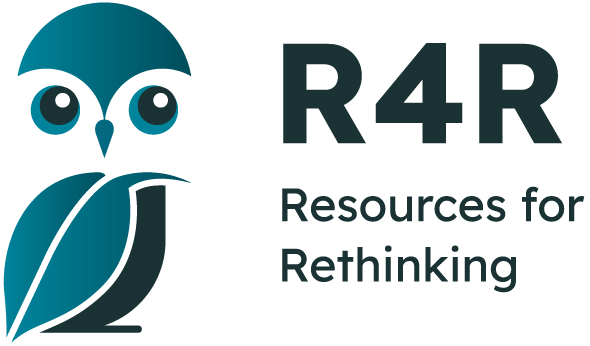- Home
- Tutorial
- Resource Guides
- Focus Areas
- LSF Programs
-
Professional
Development - Review Process
-
A project of LSF

Search for Resources
Description
The resource focuses on the impact of industrial development on the environment and its connection to Indigenous communities, particularly in the context of reconciliation. It examines how industrial activities, such as pipelines and forestry, can harm the environment and traditional ways of life, raising concerns about resource degradation and potential conflicts. The resource explores this important relationship, and Indigenous concepts of sustainability, and how industry and Indigenous communities can work more effectively on mutually beneficial economic projects.
This two-part resource:
Part One - What is Reconciliation opens conversations regarding how colonization has impacted First Nations, Inuit and Métis relationships to land and explores instances of environmental racism. It aims to foster an understanding of Indigenous perspectives on land stewardship, sustainability, and the impact of industrial development on Indigenous communities and the natural world.
Part Two – In the Whose Land? Activity students will go to the Whose Land website to determine whose land they are on. Review the creation story of the people whose land they are on and read or watch a land acknowledgement for that territory. They will discuss and think critically about that acknowledgement. What is the intent? What is its purpose? Does it accomplish what it means to do?
As a culminating activity, students create, draw, or paint a picture of a place, body of water, or non-human being they wish to protect and explain the significance of that place to them, their family, or their culture.
The resource provides guidelines for engaging in meaningful and respectful Reconciliation Conversations, slides to accompany Reconciliation Conversations Environment and Relationship to the Land, discussion questions, and a webinar to assist educators. Link to the resource click here
General Assessment
Recommendation of how and where to use it
The resource ties into the broader theme of reconciliation by exploring how understanding the relationship between the environment and Indigenous communities can contribute to a more just and sustainable future. It aims to provide students with a deeper understanding of Indigenous perspectives on the relationship between people and the land, promoting respect for the environment and fostering a sense of interconnectedness with nature.
Students can enhance their understanding of the United Nations Declaration on the Rights of Indigenous Peoples (UNDRIP) through various activities, including reading and analyzing the document, exploring its historical significance, comparing it with other declarations, and researching its impact on Indigenous communities. They can also engage in discussions, organize awareness campaigns, and participate in educational sessions to promote understanding and action, such as visits to local Indigenous communities or nature-based learning sites.
Relevant Curriculum Units
The following tool will allow you to explore the relevant curriculum matches for this resource. To start, select a province listed below.
- Step 1Select a province
- Alberta
- Step 2Select a grade level
- Grade 10
- Step 3Select a subject
- Indigenous Studies
- Step 4Relevant matches
- Aboriginal Studies 10: Political and Economic Organization
- British Columbia
- Step 2Select a grade level
- Grade 10
- Step 3Select a subject
- Social Studies
- Step 4Relevant matches
- Social Studies 10 -Canada and the World: 1914 to the Present: Historical and contemporary injustices challenge the narrative and identity of Canada as an inclusive, multicultural society
- Grade 11
- Step 3Select a subject
- Social Studies
- Step 4Relevant matches
- Explorations in Social Studies 11(Human Geography, Contemporary Indigenous Studies, Social Justice) : Social justice initiatives can transform individuals and systems
- Explorations in Social Studies 11(Human Geography, Contemporary Indigenous Studies, Social Justice) : Indigenous peoples are reclaiming mental, emotional, physical, and spiritual well-being despite the continuing effects of colonialism
- Grade 12
- Step 3Select a subject
- Social Studies
- Step 4Relevant matches
- B.C. First Peoples: Through self-governance, leadership, and self-determination, B.C. First Peoples challenge and resist Canada's ongoing colonialism
- Contemporary Indigenous Studies: Indigenous peoples are reclaiming mental, emotional, physical, and spiritual well-being despite the continuing effects of colonialism
- Contemporary Indigenous Studies: Indigenous peoples continue to advocate and assert rights to self-determination
- Contemporary Indigenous Studies: Reconciliation requires all colonial societies to work together to foster healing and address injustices
- Contemporary Indigenous Studies: The identities, worldviews, and languages of indigenous peoples are renewed, sustained, and transformed through their connection to the land.
- Social Justice: The causes of social injustice are complex and have lasting impacts on society
- Manitoba
- Step 2Select a grade level
- Grade 9
- Step 3Select a subject
- Indigenous Languages and Cultures
- Step 4Relevant matches
- Cultural and Linguistic Diversity: Other Cultures: Connections and Influences
- Cultural and Linguistic Diversity: Specific Aboriginal Culture
- Grade 10
- Step 3Select a subject
- Indigenous Languages and Cultures
- Step 4Relevant matches
- Cultural and Linguistic Diversity: Other Cultures: Connections and Influences
- Cultural and Linguistic Diversity: Specific Aboriginal Culture
- Grade 11
- Step 3Select a subject
- Indigenous Languages and Cultures
- Step 4Relevant matches
- Cultural and Linguistic Diversity: Other Cultures: Connections and Influences
- Cultural and Linguistic Diversity: Specific Aboriginal Culture
- Grade 12
- Step 3Select a subject
- Indigenous Languages and Cultures
- Step 4Relevant matches
- Cultural and Linguistic Diversity: Other Cultures: Connections and Influences
- Cultural and Linguistic Diversity: Specific Aboriginal Culture
- Social Studies
- Step 4Relevant matches
- Citizenship and Sustainability: Area of Inquiry: Social Justice and Human Rights
- Citizenship and Sustainability:Area of Inquiry: Indigenous Peoples
- Global Issues
- Global Issues
- Northwest Territories
- Step 2Select a grade level
- Grade 10
- Step 3Select a subject
- Social Studies
- Step 4Relevant matches
- Module 2: Residential Schools
- Northern Studies
- Social Studies 10 -Canada and the World: 1914 to the Present: Historical and contemporary injustices challenge the narrative and identity of Canada as an inclusive, multicultural society
- Grade 11
- Step 3Select a subject
- Social Studies
- Step 4Relevant matches
- Explorations in Social Studies 11: Indigenous peoples are reclaiming mental, emotional, physical, and spiritual well-being despite the continuing effects of colonialism
- Explorations in Social Studies 11: Social justice initiatives can transform individuals and systems
- Grade 12
- Step 3Select a subject
- Social Studies
- Step 4Relevant matches
- Northern Studies 12: Reconciliation requires all northern people to work together to foster healing, address injustice, celebrate diversity, and live well together
- Nova Scotia
- Step 2Select a grade level
- Grade 11
- Step 3Select a subject
- Social Studies
- Step 4Relevant matches
- Contemporary Canadian Studies 11: Canadian Indigenous Cultures
- Contemporary Canadian Studies 11: Environmental Justice
- Grade 12
- Step 3Select a subject
- Social Studies
- Step 4Relevant matches
- Global Sustainable Solutions: Sense of Place
- Ontario
- Step 2Select a grade level
- Grade 10
- Step 3Select a subject
- Indigenous Studies
- Step 4Relevant matches
- First Nations, Métis, and Inuit in Canada (Open): 1969 to the Present, Resilience, Determination, and Reconciliation
- Grade 11
- Step 3Select a subject
- Indigenous Studies
- Step 4Relevant matches
- Contemporary First Nations, Métis, and Inuit Issues and Perspectives (univ./college prep) : National and Regional Perspecives
- World Views and Aspirations of First Nations, Métis, and Inuit Communities in Canada ( Workplace prep.):Reclamation and Reconciliation
- Social Studies
- Step 4Relevant matches
- Equity, Diversity, and Social Justice (Workplace Pre.) Equity, Social Justice, and Change
- Yukon Territory
- Step 2Select a grade level
- Grade 10
- Step 3Select a subject
- Social Studies
- Step 4Relevant matches
- Social Studies 10 -Canada and the World: 1914 to the Present: Historical and contemporary injustices challenge the narrative and identity of Canada as an inclusive, multicultural society
- Grade 11
- Step 3Select a subject
- Social Studies
- Step 4Relevant matches
- Explorations in Social Studies 11: Indigenous peoples are reclaiming mental, emotional, physical, and spiritual well-being despite the continuing effects of colonialism
- Explorations in Social Studies 11: Social justice initiatives can transform individuals and systems
- Grade 12
- Step 3Select a subject
- Social Studies
- Step 4Relevant matches
- B.C. First Peoples: Through self-governance, leadership, and self-determination, B.C. First Peoples challenge and resist Canada's ongoing colonialism
- Contemporary Indigenous Studies: Indigenous peoples are reclaiming mental, emotional, physical, and spiritual well-being despite the continuing effects of colonialism
- Contemporary Indigenous Studies: Indigenous peoples continue to advocate and assert rights to self-determination
- Contemporary Indigenous Studies: Reconciliation requires all colonial societies to work together to foster healing and address injustices
- Contemporary Indigenous Studies: The identities, worldviews, and languages of indigenous peoples are renewed, sustained, and transformed through their connection to the land.
- Social Justice: The causes of social injustice are complex and have lasting impacts on society
Themes Addressed
Ecosystems (1)
- Appreciating the Natural World
Human Rights (2)
- Environmental Racism/Justice
- Social Justice
Indigenous Knowledge (2)
- Rituals, Spirituality and Worldviews
- TEK -- Traditional Ecological Knowledge

